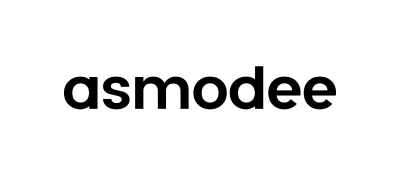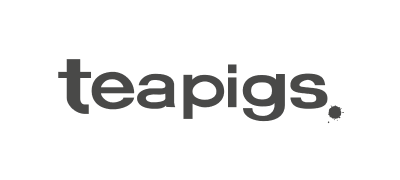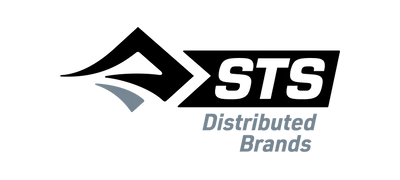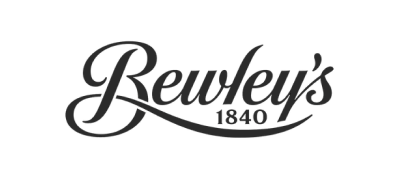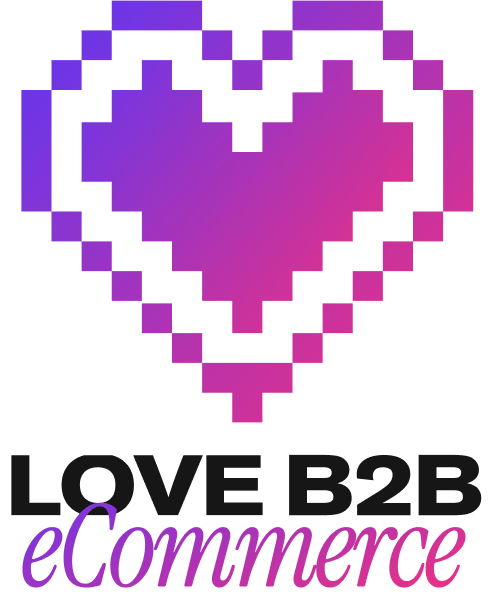At SparkLayer, we work with businesses of all sizes and stages - including people who are still in the research stage, trying to figure out if B2B is right for them! That’s why we created this beginner’s guide and glossary, covering everything from ‘What is B2B eCommerce’ to real-world wholesale case studies.
We’re covering the basics - from buzzwords and acronyms to in-depth definitions and B2B eCommerce examples. Remember, you can always book a personalised demo with our team if you want more information about how SparkLayer can power your wholesale!
What is B2B eCommerce?
B2B eCommerce (business-to-business) is when a business sells products or services online to other businesses.
Unlike B2C, where businesses sell directly to individual consumers, B2B transactions usually involve larger order volumes, negotiated/ lower pricing, and long-term customer relationships.
Modern B2B eCommerce platforms make it easy for businesses to manage pricing, ordering, and shipping entirely online, helping streamline operations and improve the buying experience.
B2B can also be referred to as ‘wholesale’ or ‘trade’ due to orders typically being larger, in bulk, and having higher value.
What is B2B eCommerce? Glossary
The Basics
| Item | Details |
|---|---|
| B2B = Business-to-business | B2B stands for business-to-business - a type of sales where a business sells its services or products to another business. This is often also known as ‘wholesale’ or ‘trade’. |
| B2C or BTC = Business-to-consumer | B2C stands for business-to-consumer - a type of sales where a business sells its services or products to consumers (also known as end users or end customers). This normally involves selling through a retailer or marketplace, not via a website or app. This is often also known as ‘BTC’, where the ‘T’ stands for the ‘to’. |
| D2C or DTC = Direct-to-consumer | D2C stands for direct-to-consumer - a type of sales where a business sells its services or products to consumers (also known as end consumers or end customers). This normally involves selling via a website or app, not through a retailer or marketplace. This is often also known as ‘DTC’, where the ‘T’ stands for the ‘to’. |
| eCommerce | eCommerce refers to online commerce, so essentially buying and selling online. The ‘e’ originates from the initial referring to the electronic aspect, like ‘email’ for electronic mail. |
| eCommerce platform | This is a tool that allows you to sell your products online. eCommerce platforms like Shopify, BigCommerce, Magento, Wix, and WooCommerce are popular ones within both B2B and B2C. Need a recommendation? Head to our round-up to discover the best B2B eCommerce platforms. |
| Hybrid eCommerce | Hybrid is a term used to describe a business that sells both B2B and B2C; to both businesses and individual consumers. They typically use 2 separate platforms or channels to do this in order to separate stock and payment methods, for example. |
| Inventory | Inventory is another way of saying ‘stock’ and refers to the products a business holds for sale. This typically only includes products that are ready to be sold and doesn’t include raw materials or in-progress products. |
| Omnichannel retail | Omnichannel is when brands use various channels to interact with consumers. For example, you could buy a product online but collect it in-store - you’re experiencing buying through a range of ‘channels’ from the same business. |
| SKU = Stock Keeping Unit | SKUs are unique numbers assigned to each product that a business stocks. They include information like the size, colour, style, price, and other key product information. SKUs are only really used internally to help track inventory more easily and aren’t for customers’ use. |
| Trade | This refers to B2B-style selling, where products are bought in bulk and resold. This is often also known as ‘B2B’ or ‘wholesale’. |
| Variants | If you sell a few versions of the same t-shirt, each version is essentially a ‘variant’ of the basic t-shirt. For example, variants of the t-shirt may be different in terms of size, style, colour, or material. |
| Wholesale | This refers to B2B-style selling, where products are bought in bulk and resold. This is often also known as ‘B2B’ or ‘trade’. |
B2B Sales
| Item | Details |
|---|---|
| AOV = Average Order Value | Arguably one of the most important metrics within B2B, AOV is how much your average order is worth. This is especially relevant within B2B, where orders are typically larger than within B2C/ D2C. You can calculate this by adding up the total value of all of your orders and dividing that figure by your total number of customers. We’ve got some great tips on boosting your AOV coming to our Love B2B eCommerce resource hub - stay tuned! |
| CAC = Customer Acquisition Cost | If you’re spending money on adverts or campaigns to get customers buying from your B2B eCommerce store, this is a metric you need to be tracking. It allows you to see how much you’re spending to acquire each customer. You can calculate this by adding up your advertising costs and dividing that figure by how many customers you’ve got through that channel. This will help you understand which channels or ads to invest in more - and which to get rid of! For example, if you’re spending a lot of money on an ad but only getting 1 customer a month through it, that 1 customer is going to cost a lot of money compared to an ad that generates 10 customers each month. |
| Sales Agent | This is a SparkLayer-specific term, but still worth dropping in. Our Sales Agent tool allows B2B brands to log in on behalf of their customers and place orders - only when approved by the customer beforehand, of course! It provides another layer of customer service, speeding up the process, removing manual tasks for B2B buyers, and adding real value. Learn more about SparkLayer’s Sales Agents. |
B2B tech jargon
| Item | Details |
|---|---|
| API = Application Programming Interface | APIs are essentially pieces of software that allow you to ask an application to do something and get a response all on the same webpage. These are especially handy in B2B eCommerce when you want to integrate your tech stack, as they allow 2 tools to ‘speak to each other’. |
| Back-end | This refers to the hidden part of your website - the bits that customers don’t see! It’s basically the code and techy parts that make your website work. When it comes to eCommerce, the back-end is where you’ll manage your inventory (stock), orders, customers, product information, and more. |
| EDI = Electronic Data Interchange | EDIs might sound like a bit of a mouthful, but they’re actually designed to make things simple. EDIs allow for the automated exchange of data between businesses or platforms. In terms of B2B eCommerce, this often looks like sharing data related to invoices, shipping statuses, and inventory documents. |
| End customer | Nice and straightforward, your end customer is the person you’re actually selling to - not the middleman business or dropshipper. |
| ERP = Enterprise Resource Planning | At SparkLayer, we love ERPs and have integrations with a number of fantastic ones. ERPs are bits of software that help you manage your business’ day-to-day activities - like accounting, project management, and supply chains. They keep all your info and planning in one centralised location, making it easier to stay on top of things. Need a recommendation? Discover our ERP integrations. |
| Front-end | This is literally the front of your website - so what your customers see. For example, on the front-end of your website, a customer will see and click a button. The back-end is where the button then serves its function (e.g. adding the product to your basket). |
| OMS = Order Management System | OMS tools help you manage your order processes - often automating the entire journey, from fulfilling and tracking customer orders to managing inventory and sales processes. |
| PDP = Product Display Page | PDPs are crucial within both B2C and B2B eCommerce - they’re webpages that display individual products, often using images and descriptions to encourage customers to purchase them. PDPs will include information about available designs, colours, and sizes, as well as sharing customer reviews, shipping information and rules, and other relevant information customers may want to know before making a purchase. |
B2B payment methods
| Item | Details |
|---|---|
| BNPL = Buy Now Pay Later | BNPL agreements are a way for customers to buy goods on credit and pay for them later. This might be through regular interest-free instalments or after an interest-free period (they’re a great way to increase AOV). Popular BNPL providers include Klarna within B2C and Hokodo within B2B. Need a recommendation? Discover our payment partners. |
| Credit limit | A credit limit is the maximum amount a customer is allowed to spend on credit with your business. It’s agreed in advance and helps manage payment risk. |
| Credit terms | Credit terms outline how and when a customer must pay for goods bought on credit. This can include payment deadlines, early payment discounts, or late fees. |
| CSV = Comma-Separated Values | A CSV is a simple text file where information is separated by commas. CSV files are most commonly used in spreadsheets and databases. |
| Discounts | In B2B eCommerce, discounts are price reductions offered to customers, often based on order volume, customer type, or agreed trade terms. Learn more about SparkLayer’s Discount Engine. |
| Invoice | An invoice is a document sent to a customer requesting payment for goods or services supplied. In B2B, it often includes purchase order details and payment terms. Learn more about SparkLayer’s invoicing tool. |
| Net terms | Net terms are payment agreements that give customers a set number of days to pay an invoice after delivery, such as Net 30 or Net 60. |
| POS = Point of Sale | A POS is the place where a customer pays for a product or service. This can be in a physical store at a till or virtually on a website at the online checkout. |
| POs = Purchase Orders | POs are documents that a buyer sends to a supplier to confirm an order. They detail products, quantities, and agreed prices before invoicing. |
| Quoting | Learn more about SparkLayer’s Quoting Engine. |
B2B shipping
| Item | Details |
|---|---|
| 3PL = Third-Party Logistics | 3PLs help companies with the operational logistics of their supply chain, like transport, warehousing, pick and pack, inventory, forecasting, and fulfilment. |
| Dropshipping | Dropshipping is a form of retail business where a store or seller accepts customer orders but doesn’t keep products sold ‘in stock’. Instead, in a form of supply chain management, the store transfers the orders and their shipment details to either the manufacturer, a wholesaler, another retailer, or a fulfilment centre, which then ships the goods directly to the customer. |
| WMS = Warehouse Management System | A WMS is a software application that helps control and manage the day-to-day operations in a warehouse. It can guide inventory receiving and put-away, optimise picking and shipping of orders, and advise on inventory replenishment. |
How is B2B different from B2C?
The end customers within B2B and B2C are very different, as discussed - B2B customers are other businesses, while B2C customers are individual consumers.
Other areas that differ include shipping (think pallets, not single items!) and payment options. Many businesses may not use bank cards to pay for large wholesale orders, instead preferring invoicing, purchase orders (POs), or something called net terms, where buyers are given a certain number of days to make a payment.
We’ve summed up the key differences between B2B and B2C eCommerce:
| B2C / D2C | B2B / Wholesale | |
|---|---|---|
| Order size | Small orders | Bulk orders |
| Order value | Lower value | Higher value |
| Buying behaviour |
Some reordering for personal, repeat items (e.g. shampoo or cereal) Impulse purchasing is common |
Regular reordering of the same items (e.g. monthly office supplies) Impulse purchasing is rare |
| Price lists | One price for all buyers | Multiple price lists tailored to customer groups |
| Payment methods | Limited options - usually upfront card payments or BNPL methods (like Klarna) | Multiple options - including upfront, purchase orders (POs), invoicing, and net terms |
Final thoughts
Getting started with B2B eCommerce can feel overwhelming, but we’re here to help!
The first step is getting to grips with exactly what is B2B eCommerce - what the acronyms stand for, key considerations for hybrid and standalone brands, and the eCommerce platforms available.
Whether you’re moving your existing B2C or D2C store to a hybrid eCommerce setup or are still researching B2B and wholesale eCommerce, our resource hub is for you! Love B2B eCommerce is the go-to destination for all things wholesale, from getting started to scaling up.
Now that we’ve answered the question, ‘What is B2B eCommerce?’, it’s time to ask why you should do it! Check out our Intro to B2B eCom guide to learn more! Ready to take the next step and see how SparkLayer can power your wholesale? Book a personalised call with our team.





